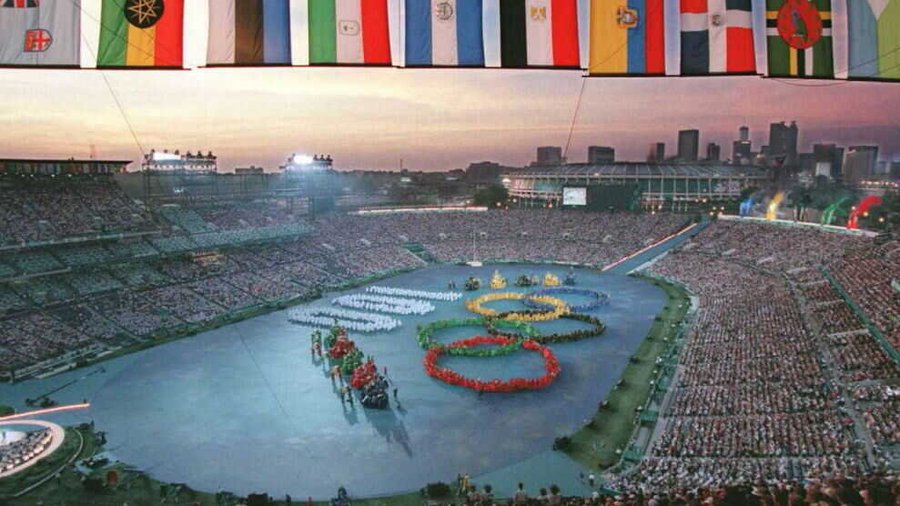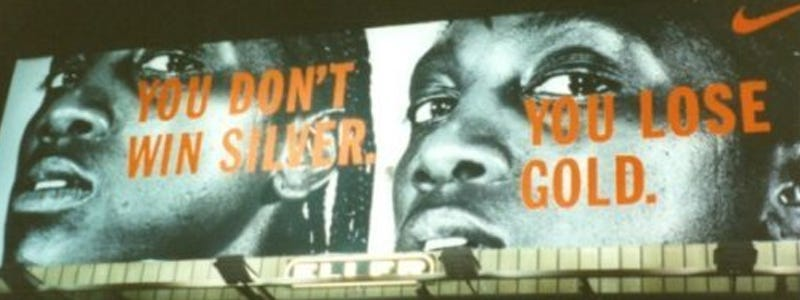Student Village Academy › Forums › ENTERTAINMENT › Sports › Reebok Sponsored A 1996 Olympic Team But Nike Got All The Fame
- This topic has 1 reply, 1 voice, and was last updated 1 year, 4 months ago by
 justseyi.
justseyi.
-
AuthorPosts
-
-
August 17, 2024 at 3:53 PM #71476
 Shekinah BramaModerator
Shekinah BramaModeratorIn 1996, Reebok made a bold move by paying $50 million to sponsor the US Olympic team, believing they had secured a prime spot in the global spotlight.
But Nike had a different plan—a genius stunt that would allow them to steal the show and dominate the Olympics branding war without being an official sponsor.
Here’s how Nike outmaneuvered Reebok at the Atlanta Olympics:
The 1996 Atlanta Olympics were more than just a major sporting event; they were also a battleground for marketing supremacy.
Ten official sponsors, including giants like Coca-Cola, IBM, and Kodak, poured a collective $400 million into sponsorships.
What did this mean for Nike?
Nike was up against a major challenge: competing without official Olympic sponsorship status. But they were determined to come out on top.
At the time, Nike’s revenue in 1995 was $4.8 billion, while Reebok was hot on their heels with $3.5 billion. The stakes were high—the outcome of this Olympic showdown could tip the scales in the fierce “sneaker wars.”
So, what did Nike do?
Nike’s Chief Marketing Officer boldly declared, “We’re going to show that you don’t need to sponsor the Olympics to win it.”
Although Reebok was the official sponsor, Nike wasn’t about to sit back. They launched an ambitious and highly effective guerrilla marketing campaign that would turn the tables in their favor.
Here’s how they did it:
**Step 1: The Nike Center**
Nike constructed a massive 15,000-square-foot hospitality center just 150 yards from the entrance of the Olympic Village. This sleek, multi-story glass and steel structure served as a free space for athletes to meet their families, relax, and conduct interviews.
But Nike wasn’t done yet.
**Step 2: Billboards Galore**
Nike blanketed Atlanta with over 1,000 billboards, each featuring bold and memorable slogans like, “You don’t win silver—you lose gold.” Their total spending on outdoor ads? A staggering $5.7 million, surpassing any official sponsor’s spend on traditional advertising channels.
These billboards were everywhere—except inside the Olympic venues themselves. But it didn’t matter; Nike estimated they garnered 632 million impressions from this outdoor campaign alone.
However, their biggest triumph was yet to come.
**Step 3: Spotlight on Star Athletes**
Even though Reebok was the official sponsor, athletes were free to choose their footwear—and Nike seized this opportunity. The most iconic moment? Michael Johnson’s gold shoes during the 400m final.
Nike custom-made the metallic gold spikes for Johnson, ensuring that all eyes were on him. And they were.
Johnson didn’t just win gold; he shattered the world record, and the image of him crossing the finish line in those golden Nike shoes became instantly iconic, plastered across newspapers and TV screens worldwide. Nike couldn’t have asked for better publicity.
**Step 4: Flags for Fans**
Nike also produced thousands of branded flags and distributed them for free to spectators entering the Olympic venues. As TV cameras panned across the stands, viewers saw seas of Nike swooshes waving proudly, a clever workaround of the rules that prohibited non-sponsor ads inside the venues.
The result?
A study revealed that 22% of Americans mistakenly thought Nike was an official Olympic sponsor, while only 16% correctly identified Reebok as the actual sponsor. Nike’s sales soared by 22% following the games, proving that their ambush marketing strategy was a resounding success.
But the victory wasn’t without consequences.
Reebok was understandably frustrated and sued the Atlanta organizing committee for failing to protect sponsor rights. The case was settled out of court in 1998.
The key takeaway?
Spending big on ads doesn’t necessarily equal successful branding. Sometimes, the best branding can come from thinking outside the box—and that lesson is more relevant today than ever.
-
August 17, 2024 at 3:56 PM #71479
 justseyiKeymaster
justseyiKeymastercheck out this cool video
-
-
AuthorPosts
- You must be logged in to reply to this topic.






